4 cars that were the last of their kind, and whose prices command a premium
The car business is evolving constantly. As in nature, though, not every engine, body style, or model evolves fast enough to survive. These extinctions, sad as they can be, are also focal points for enthusiasts who wax poetic about “the end of an era” or “the last of its kind.”
Cadillac’s CT4-V and CT5-V Blackwings are a such machines. The two sport sedans haven’t even arrived in dealer lots but are already being eulogized as the last internal combustion-powered fast Caddies. Buyers are also supposedly paying more for Ferrari 458s (the last naturally aspirated Ferraris) than newer and objectively better turbocharged 488s, and we’ve already seen how late-model Ferraris with now-extinct open-gate manual gearboxes command a huge premium over their quicker, paddle-shifted siblings.
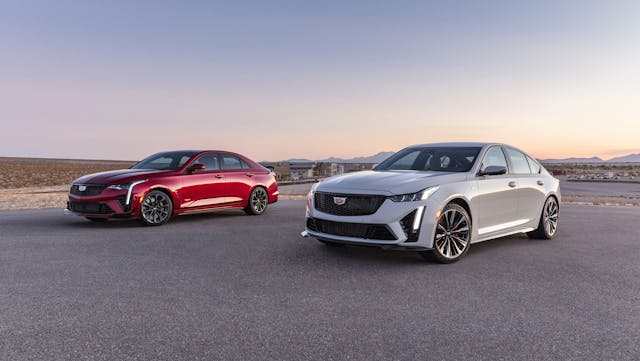
These various examples got us wondering about other cars that represent the “end of an era” and how that designation translates to collectibility down the road. Does being the last of its kind also make a car the most valuable of its kind?
The short answer: Not necessarily. Just look at another Cadillac—the 1976 Eldorado Convertible. With soft top sales declining in the ’70s and looming crash regulations threatening essentially to outlaw open cars, Cadillac touted the Eldo as “the last American convertible.” Many people believed it, bought an Eldorado, then tucked it away. Of course, there have been plenty of American convertibles since then. Cadillac even brought one out less than 10 years later. Today a ’76 Eldorado is worth $49,300 in #2 (Excellent) condition, not chump change but not enough to retire on, either, and there are earlier Cadillac convertibles that are worth plenty more.
There are also cases where “first of their kind” cars are in fact the most desirable. Early Series I Jaguar E-Types are worth more than the final Series III cars. Early C3 (1968-82) Corvettes are worth more than their later, softer descendants. First-generation (1955-57) Ford Thunderbirds are worth more than the later four-seat T-Birds.
But there are cases where “the last of its kind” carries clear cachet, and cachet often translates to hard currency in the collector car world. Aside from sheer sentimentality, there’s some logic at work here: Consider that the last version of a car is typically the most developed. It has all the bugs worked out. It usually goes the quickest. Sometimes cars at the end of their run don’t sell as well as they did when their design was fresher, making them rarer. Some of these end-of-the-run cars often either don’t have a direct replacement, or they were followed up by cars that didn’t live up to expectations. Here are four notable examples:
1994–98 Porsche 911 (993)
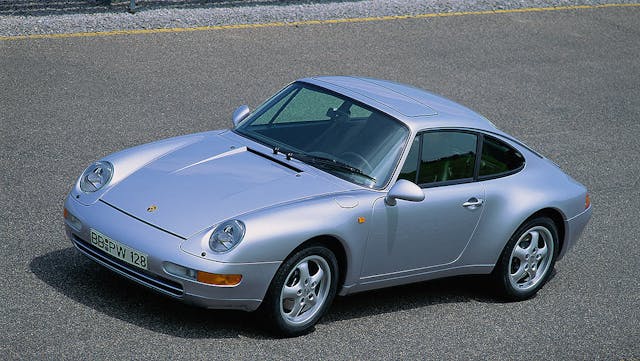
From the first 356s that rolled out of an Austrian sawmill in the 1940s, the distinctive look and sound of an air-cooled, flat engine became essential Porsche DNA. That’s exactly why the 993 (1994-98) version of the 911 is so significant to Porsche-philes—it’s the last of the line of air-cooled Porsches.
Introduced for 1994, the 993 was in typical Porsche fashion a methodical improvement on the 964 generation (1990–94) that it replaced. Porsche redesigned the engine’s bottom end and exhaust, enlarged the front brakes, improved the available Carrera 4 all-wheel drive system, and gave the 993’s structure 20 percent more torsional stiffness compared to the 964. Not typical for Porsche: It was less expensive than the car it replaced.
Car and Driver called it “the first 911 that’s truly chuckable,” and “the planet’s most eminently practical supercar.” Motor Sport called it “by far the best 911 so far.”
As the New Millennium approached, though, ever more stringent emissions rules meant that the air-cooled days were numbered, and Porsche’s hallmark sports car was due for a thorough rework. Porsche built 410,348 air-cooled 911s. The very last one—a 1998 Mexico Blue Carrera 4S—sold to Jerry Seinfeld.
For 1999 the 996 debuted, and in both looks and design it was the most radical change ever for Porsche’s hallmark sports car. From then on the 911 was a water-cooled car.
More powerful and efficient than the 993, the 996 was “a significantly faster and, yes, a better car,” according to Road & Track. But something was missing. The softer lines and the “fried egg” headlights didn’t win many fans. Neither did the fact that from the A-pillar forward the 996 looked nearly identical to the entry-level Boxster. Porsche purists, always a bit slow to embrace change, bemoaned the loss of the air-cooled six.
Years later, the water-cooled 911 is of course still going strong, but on the collector car market those last air-cooled 993s are worth significantly more than both the 964s that preceded them and the 996s that came after. In fact, during the huge surge in collector Porsche values during the mid-2010s, growth in 911s extended from the earliest 1960s cars but stopped at the 993. From 2013–17, the median #2-condition (Excellent) value for 993s jumped 24 percent but for 996s it actually dropped 3 percent. Right now, a 1998 model-year Carrera is on average worth $57,500 in Excellent condition.
993s blend classic 911 looks, heritage, and sound with (relatively) modern technology and conveniences. Porsche will never build another air-cooled production car, so as a bookend to something so integral to the Porsche story it’s a standout model, and this is reflected in its price.
1997–2004 Lotus Esprit V8
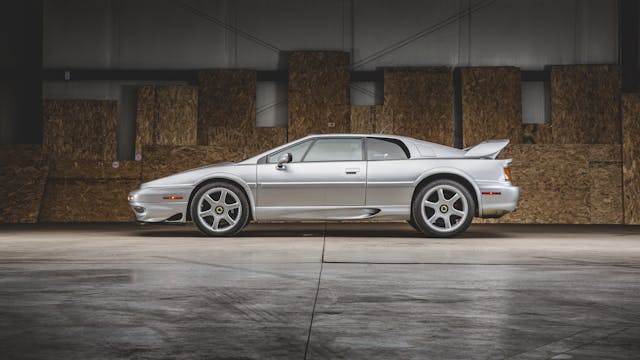
Lotus’s longest-running model, the Esprit, spanned 28 years (1976–2004). The car went through big changes in that time, and so did the company. After Lotus’s founder Colin Chapman died in 1982, company ownership passed from British investors to General Motors in 1986, to a European holding company in 1993, and to Malaysian carmaker Proton in 1996.
Meanwhile, the Esprit gained a turbocharger for its 900-series twin-cam four, Giugiaro’s original “folded paper” design was refreshed twice, a silver example starred in the 1990 film Pretty Woman, and Lotus raided several new parts bins for things like taillights and steering wheels. The Esprit’s biggest and last update, though, was when the Esprit S4 gained a V-8 engine for the 1997 model year.
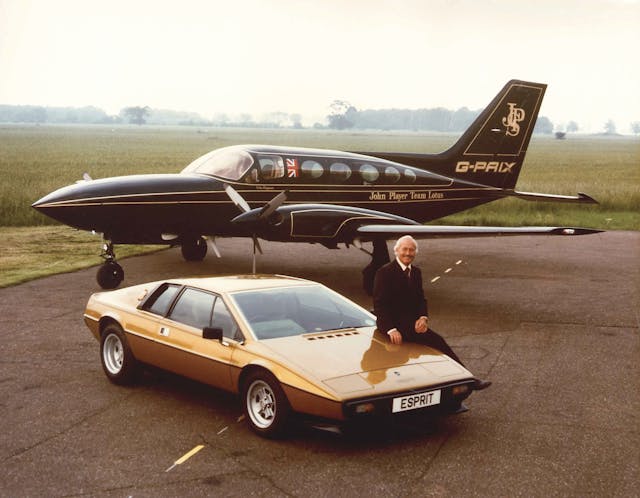
A V-8 Esprit had been tested as early as 1982, but Lotus was perpetually short on funds and the four-cylinder had plenty of development life left in it. That wasn’t the case by 1996, however, and Lotus’s proprietary V-8 breathed new life into the aging wedge. Strapped with two Garrett turbochargers but still mated to a Renault transaxle, the 3.5-liter, 32-valve, flat-plane crankshaft Lotus V-8 gave the Esprit 349 hp, nearly 50 more than the most powerful four-cylinder cars, but barely added 100 pounds of weight in the process.
The Esprit V8 soldiered on with a few subtle revisions until 2004, by which time the little Elise had shown the way forward for the company. About 1200 of the more 10,000 Esprits built were V8 models, and today they’re the most valuable of the breed, with a 2004 model commanding $47,000 in Excellent condition. They’re generally screwed together better with higher quality materials, and have more modern amenities. And as for being the last of their kind, they aren’t just the last Esprits. They’re the last Lotuses with a direct connection back to Colin Chapman. They’re also the last Lotuses with a backbone chassis, which Chapman first used on the Elan back in the 1960s.
1970 Chevelle SS 454 LS6
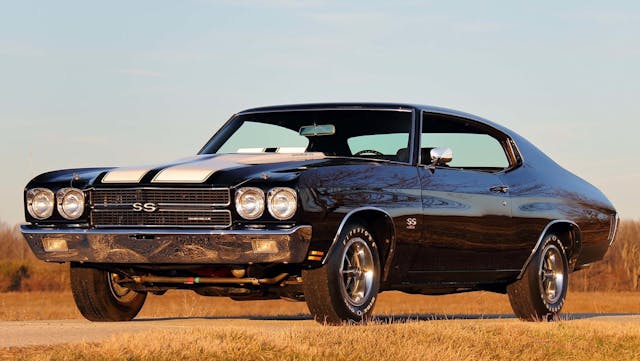
The arms race among American muscle cars peaked in 1970. Hemis were being shoehorned into the new Dodge Challenger and Plymouth Cuda. Ford was putting its 429 V-8 into the Mustang, Torino, and Mercury Cyclone. GM, meanwhile, lifted its ban on engines larger than 400 cubic inches in its intermediate-body cars, and each division responded with a big-engined car of its own. Pontiac, Oldsmobile, and Buick used 455s, while Chevrolet grew its 427 to 454 cubic inches. The ultimate iteration of that engine, the LS6, closed out GM’s big-block era with a bang.
Chevrolet’s A-body Chevelle was one of GM’s most versatile platforms ever, spawning sedans, coupes, convertibles, wagons, and El Camino pickups, with engines ranging from economical sixes to monstrous V-8s. The monstrous V-8s were the most exciting, of course, and for 1970 buyers of the top SS trim could have one of several 396s or two 454s. The lower output 454 was the 360-hp LS5, while the LS6 used the same block but came with solid lifters, an 800-cfm Holley four-barrel carburetor, an aluminum intake manifold, stronger bottom end with four-bolt mains, forged steel crankshaft and connecting rods, and 11.25:1 compression with forged aluminum pistons. All that was good for 450-hp and 500 lb-ft of torque.

The privilege of an LS6 didn’t come cheap. In addition to the $503.45 to unlock the SS 454 package, the LS6 engine cost an additional $263.30, and buyers still had to tick the box for either M22 4-speed ($221.80) or M40 Turbo-Hydramatic ($290.40). A well-optioned LS6 could cost more than 4 grand new.
Sources vary on the number of LS6s sold. It’s probably somewhere around 4500, which in terms of mass-produced Chevys is seriously scarce. For reference, Chevrolet sold about 2.4M second-gen Chevelles from 1968-72.
After the 1970 model year, emissions rules and insurance rates gradually strangled muscle cars, and performance tapered off. Although a 454 remained available for the Chevelle until 1972, the LS6 didn’t even make it past 1970, making this one-year wonder the last in the long and celebrated line of the unencumbered classic Chevrolet muscle cars. That’s why these are some of the most valuable muscle cars on the market, with Excellent-condition 1970 LS6 coupes averaging $124,000.
1993–2002 Mazda RX-7

Mazda embraced Wankel rotary engine technology back in the 1960s, but it took until the first RX-7 in 1978 to truly get it right. While not without its quirks (apex seal failures, muscle car-like fuel economy), the RX-7 was one of the most popular sports cars of the 1980s—from 1978-90 Mazda sold about three-quarters of a million examples. It is by far the most fondly remembered rotary-powered car.
By the dawn of the 1990s, though, the Miata was a smash hit and Mazda didn’t need another entry-level sports car. These were also the days when Japan’s bubble economy had yet to burst, and all the major Japanese carmakers were at work on exotic, tech-heavy high-performance machines that became not just sports cars but dream cars for a generation of car freaks.
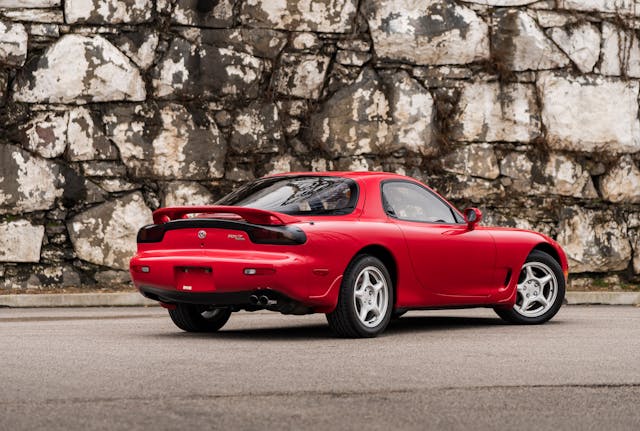
So Mazda decided to take the third-generation (FD) RX-7 upmarket. The 13B-REW engine gained a complex sequential twin-turbo system, where one turbo boosted from 1800 rpm while a second, pre-spooled turbo came on at 4000 rpm. This gave the otherwise peaky rotary a wider torque curve, and boosted peak performance to 255 hp and 271 lb-ft of torque. Mazda also added a limited-slip differential, and an available R1 performance package came with stiffer suspension, extra oil cooler, strut tower brace, special upholstery, and Z-rated tires. Compared to the simple but handsome looks of the first-gen (FB) RX-7 and the second-gen (FC) car that aped the Porsche 944, the third-gen RX-7 has clean, subtle curves and is one of the prettiest cars of the ’90s.
The RX-7’s $30,000 price was a lot for a car with a Mazda badge in the early 1990s, and fewer than 15,000 were sold here in the States from 1993–95. Like the fourth-gen Toyota Supra Turbo and Z32 Nissan 300ZX Turbo, the third-gen Mazda RX-7 was a far more ambitious design than its predecessors and, while praised upon its introduction, only got more expensive as the ’90s wore on thanks to unfavorable exchange rates. None of the high-tech Japanese sports cars of the ’90s had a direct replacement, which makes that time period something of a golden era. As a result, those cars are far more collectible than the cars that came before.
Being rarer, quicker, and better-looking than its predecessors, the FD RX-7 is (unsurprisingly) worth the most, averaging $44,500 for 1994 models in Excellent condition. The FD has also appreciated more sharply than the other two generations, even as clean right-hand drive examples have become eligible for import here and increased supply. And in a world of six-figure Supras, NSXs, and GT-Rs, the little turbo rotary has some room to grow further still.
Want the full version of this story with data-packed charts? Check out Hagerty Insider.


